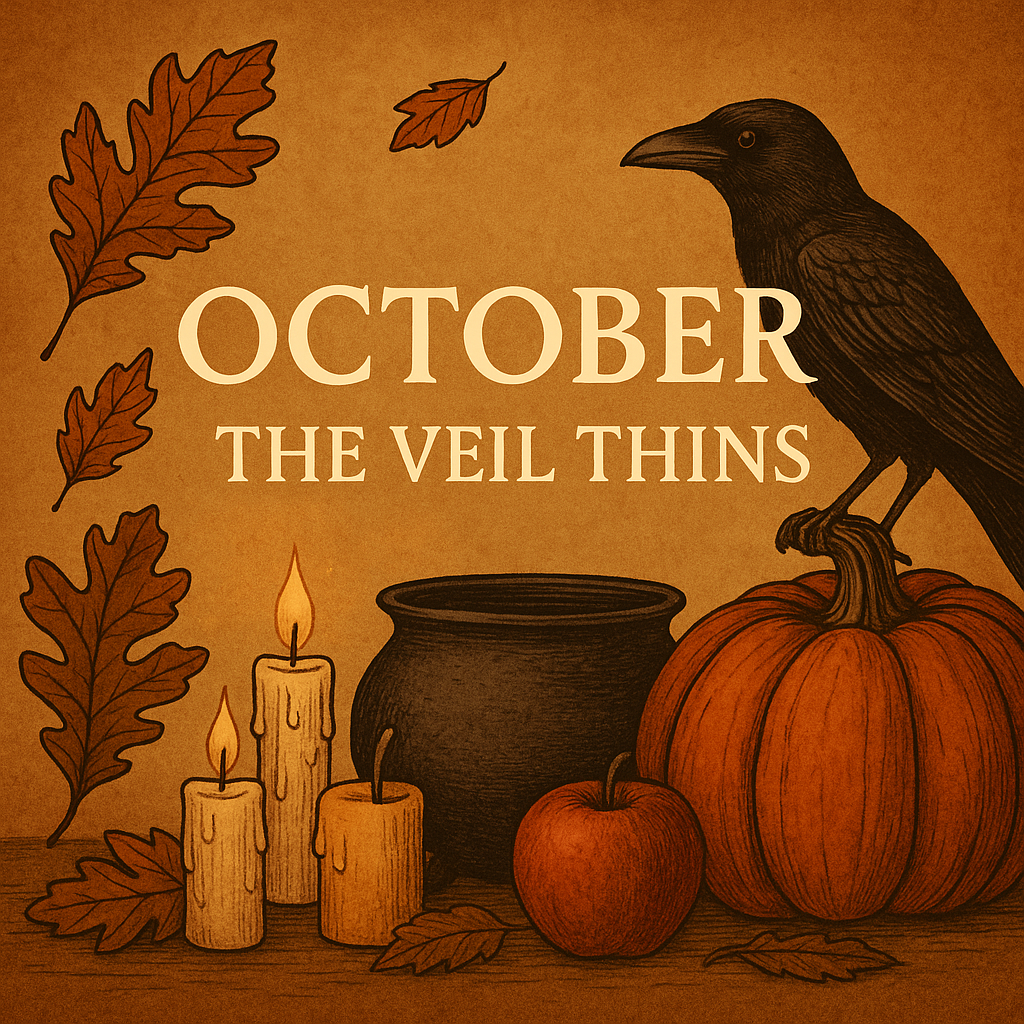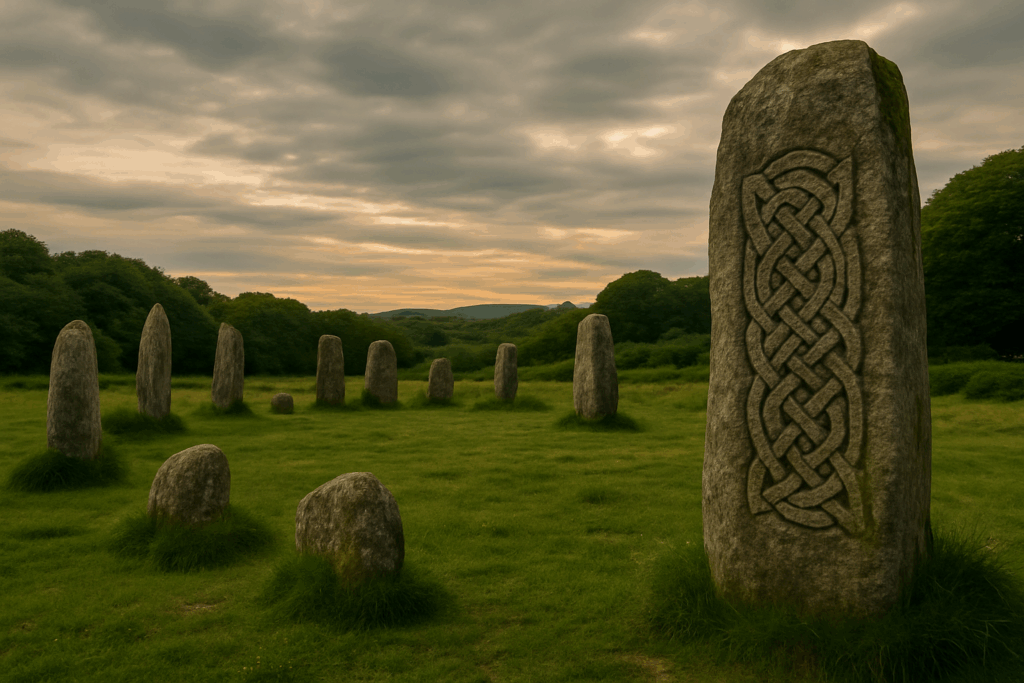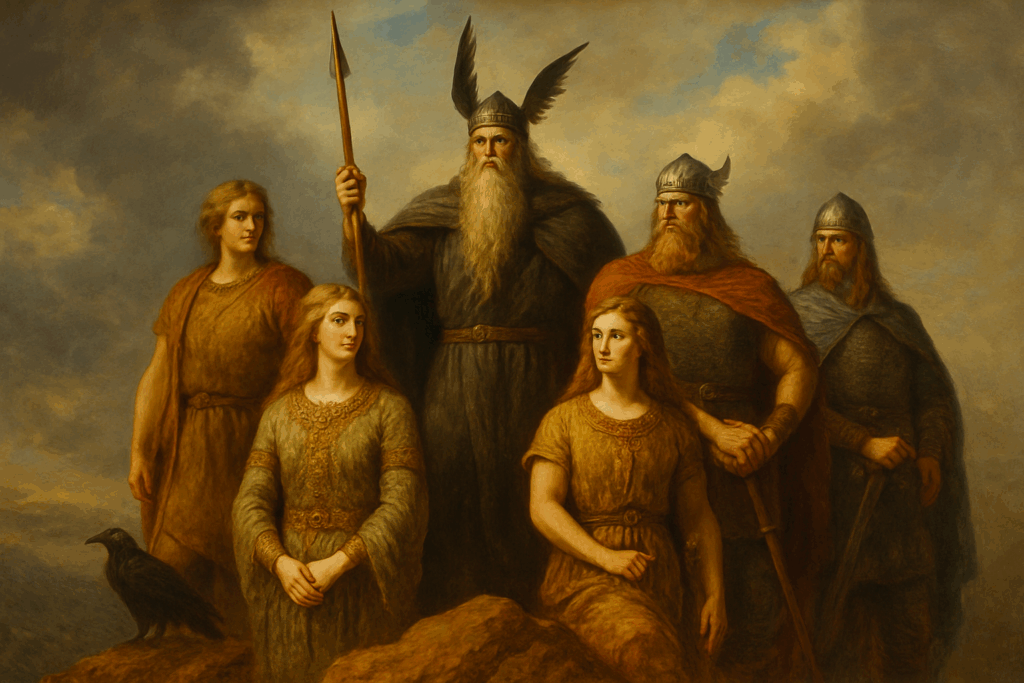October 29 – Candles for the Departed

Ancestral veneration and remembrance rites.
By the twenty-ninth of October, the light has grown soft and gold, stretching thin across the land as if reluctant to leave. The air smells of woodsmoke and rain, and the evenings fall into quiet reflection. The veil is nearly transparent now, its breath warm and near. All the month’s meditations — on roots, bones, leaves, and shadow — have been preparing for this: remembrance. This is the day to honor the departed, to kindle light for those who walked before us and who now walk beside us unseen. Candles for the departed are more than symbols; they are bridges. Each flame is a voice, each flicker a message whispered across worlds.
In nearly every culture, light has been used to guide the souls of the dead. The Celts left candles in windows or at crossroads to help wandering spirits find their way home. In Mexico, families prepare ofrendas — altars of marigolds, photographs, and candles — so their loved ones might return for the Día de los Muertos feast. In Christian and folk traditions across Europe, the lighting of soul candles near All Hallows’ Eve or All Souls’ Day carried the same intent: to honor, to remember, to love beyond the limits of the body. Beneath all these customs lies the same universal truth — that death does not sever connection, it changes it. The bond between living and dead endures through memory, ritual, and flame.
The ritual of candle-lighting is simple but profound. You do not need an elaborate altar, though if you have one, this is the perfect time to renew it. Begin by preparing a clean, quiet space. Dim the lights and let stillness settle. Take a few slow breaths, grounding yourself in the present. Then, gather your candles — one for each person you wish to honor, or a single flame to represent all who have passed. White candles are traditional for purity and spirit, but any color that feels meaningful will do.
Place the candles upon your altar or table. Around them, you may set small offerings — apples, bread, coins, flowers, or photos of your ancestors. These are not decorations but gestures of love. As you arrange them, speak their names. Saying a name aloud is a sacred act; it calls their essence close. Whisper, “You are remembered. You are welcome.” Feel the air shift — a subtle warmth, a hush. The departed are near, drawn by recognition.
When all is ready, light the first candle. As the wick catches, watch how the flame grows, trembling slightly as if alive — because it is. Fire is spirit manifest, the only element that consumes yet gives light. As it burns, it transforms offerings and words into pure energy, carrying them beyond the veil. Say aloud:
“This flame is for those who came before,
Whose blood and breath live on in me.
May its light guide you home,
And may peace rest between our worlds.”
Continue lighting each candle in turn, speaking a prayer, memory, or simple “thank you” for each soul. Allow yourself to feel. Grief and gratitude often rise together here; let them. The departed do not wish for sorrow alone — they wish to be remembered in the fullness of life. If tears come, they are offerings too, the water of remembrance mingling with the fire of devotion.
Once your candles are lit, sit with them in silence. Watch how the flames dance differently — some tall and steady, others flickering or leaning toward one another. Many believe these movements carry messages: a strong flame may signify acknowledgment, a wavering one a spirit still traveling. Yet whether or not you interpret them, their beauty is enough. The act of bearing witness is itself communion.
You may choose to speak during this time — to tell stories of those you’ve lost, to speak words you never could while they lived. The veil listens, and so do they. If you are with others, share these stories aloud. The sound of laughter mingling with candlelight is sacred too; remembrance need not be solemn. If alone, whisper into the air. The spirits hear through the heart, not the ears.
When the moment feels complete, close your ritual gently. Say, “Thank you for your presence, your love, your wisdom. Return to your rest with peace.” Do not blow out the candles immediately. Let them burn a while longer, so their light may linger in the room. When you do extinguish them, do so softly — snuffing rather than blowing, to honor the breath of spirit.
If you wish, take a small drop of melted wax from each candle (once cooled) and bury it outdoors, symbolically returning light to the earth. You might also pour a libation of water or wine into the soil, whispering, “As above, so below; as life, so death — all return, all renew.” These small acts complete the exchange between realms, ensuring that the energy of remembrance remains balanced.
Beyond the ritual itself, this is a day to open your awareness. Signs from the departed often come easily now — the scent of their perfume, a song on the wind, a sudden flicker of light or warmth when you think their name. These are not coincidences. The veil is porous, and love moves freely through it. When you notice these signs, acknowledge them aloud: “I see you. Thank you.” That recognition strengthens the bond. The dead, after all, do not wish to haunt — they wish to be remembered.
Candles for the departed also remind us of our own impermanence. As each flame burns, it consumes itself to give light — a perfect mirror of the human journey. We live, we give, we fade, and yet the illumination continues. To sit among the candles is to sit in the heart of that mystery, where sorrow and beauty intertwine. You begin to understand that every soul — yours included — is a temporary flame in an eternal fire.
As the night deepens, let the glow of your candles fill the room. Imagine each flame a star in the vast sky of spirit. The ancestors walk among them, moving gently through the light, brushing against your awareness like a breeze. They are not gone. They have only changed shape. And in this quiet moment, under the thinning veil of October, their warmth reaches you again.
Before sleep, carry one small flame — a tealight or candle stub — to your bedside. Let it burn safely while you whisper a final blessing:
“Those I love, walk with me in peace.
Guard my dreams and keep me whole.
May your light within me never fade.”
Then rest, knowing that you are not alone. The line between the living and the dead is only as thick as forgetfulness. Through remembrance, it dissolves — and through light, love returns.





